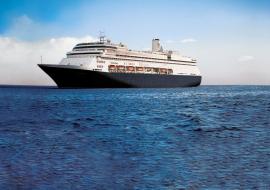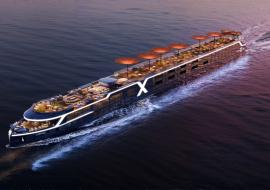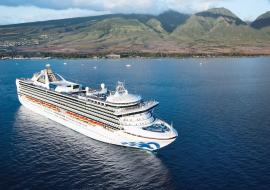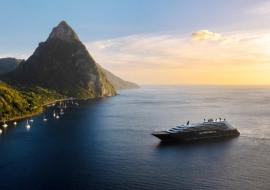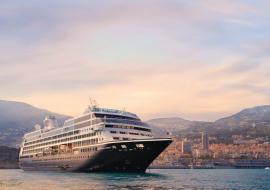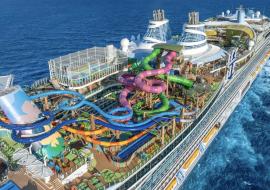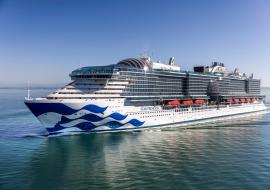Scrapping Costa Concordia Could Take Two Years
The wreck of the Costa Concordia on Sunday arrived off the northern Italian city of Genoa where it will be broken up for scrap, almost two-and-a-half years after the cruise liner ran aground and sank near the Tuscan island of Giglio, killing 32 people.
After a four-day voyage from Giglio of almost 200 miles, port pilots began maneuvering the 114,500-tonne hulk into position. It was lifted off the rocks and refloated last week after a complex operation that required months of preparation.
With seas calm, but a 10-15 knot northerly wind blowing, the ship remained about a mile offshore and final docking was expected in the afternoon, Franco Gabrielli, head of Italy’s Civil Protection Authority, told reporters.
The arrival in the industrial port of Voltri, just outside the main harbor in Genoa, will cap one of the largest and most complex maritime salvages ever attempted, expected to cost Carnival Corp, the owner of the Costa Concordia, and its insurers more than €1.5bn.
A consortium led by Italian engineering group Saipem and Genoa-based San Giorgio del Porto will break up the wreck in an operation which sources close to the project have said could cost €100m and take up to two years.
The Costa Concordia, a huge floating hotel as long as three football pitches laid end to end with 13 passenger decks, was carrying about 4,000 passengers and crew when it went down shortly after the start of a Mediterranean cruise.
The ship’s captain, Francesco Schettino, is on trial for causing the shipwreck, which ended in a chaotic nighttime evacuation during which 32 lives were lost. The body of a crew member lost in the accident has not been recovered.
In contrast to the calamitous night of January 13 2012 when the Concordia came too close to shore during a display sometimes performed by cruise ships known as a "salute", the salvage operation has been a resounding technical success.
Prime Minister Matteo Renzi was expected in Genoa later on Sunday to hail the completion of the operation which restored some pride to Italy after a disaster that was widely interpreted as a national humiliation and a human tragedy.
Work has proceeded with very few serious hitches since the wreck was brought upright from its position on the rocks and secured in place last September in a multinational effort led by US maritime recovery specialist Titan Salvage that involved as many as 200 crew working on the site at any one time.
Supported by huge "sponsons", or buoyancy tanks, on either side, the wreck has been towed by two tugboats accompanied by a convoy of auxiliary vessels which have travelled at an average speed of about two nautical miles an hour. Helped by calm seas, there were no major alarms during the voyage.
Once secured in place, the hulk will be brought into a special dock behind the port where it will be stripped down and broken up.
Source: Reuters








